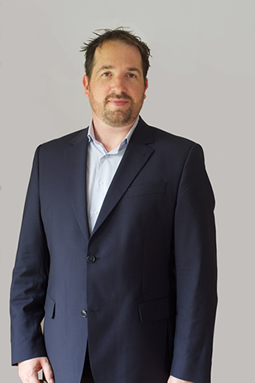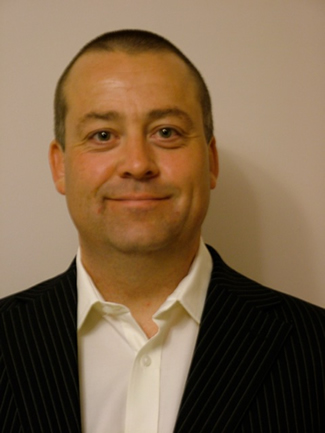The ability to link different parts of the production process together with a degree of automation is becoming increasingly important in wide-format print production, but there are several different approaches. Nessan Cleary investigates.
It’s long been argued that improving your workflow and automating as many processes as possible is the key to realising greater efficiencies and hence higher profit margins. Given that wide-format covers such a huge gamut of print producers, there's no one size fits all approach and, to complicate matters, ‘workflow’ means different things to different people - from simply ganging jobs together right through to orders that come in via a Web-to-print system being automatically fed through to printing, finishing and fulfilment.
At the simplest level, most of today’s Rip software is capable of far more than just Ripping the files for output, with even the most basic acting as a digital front end – effectively a workflow in a box. Thus most Rips now include some level of colour management, job layout such as tiling or ganging and support for multiple printers.
Onyx Graphics, for example, produces the Onyx 11 Rip, available in three versions. The RipCentre is suitable for smaller aqueous and solvent printers and includes a job editor and a Cut server. The PosterShop version also supports smaller flatbeds and has a wider range of workflow tools, including a Layout tool and media manager, while the ProductionHouse Rip will handle larger printers, including four active printers with two Rip queues. On the workflow front, this can generate colour profiles and also supports table cutters.
But Onyx has also developed Thrive, designed from the ground up as a workflow product and likely to be the main focus of future development. It’s based around Adobe’s PDF print engine v3 and uses the same Job Editor and Layout Tool as with the older Rips. There are several configurations available, mainly depending on the number and type of wide-format printers in use.
 Matt Littler, responsible for Onyx sales in northern and western Europe, says that while Onyx will continue to offer the older Rips to those customers that operate just one or two printers, anyone with more than four devices would be better off with Thrive. He says that one of the main benefits of any workflow is that having a single system running multiple printers means a common interface that anyone can be trained to use.
Matt Littler, responsible for Onyx sales in northern and western Europe, says that while Onyx will continue to offer the older Rips to those customers that operate just one or two printers, anyone with more than four devices would be better off with Thrive. He says that one of the main benefits of any workflow is that having a single system running multiple printers means a common interface that anyone can be trained to use.
Thrive also has dynamic load balancing and can work out which print device to use before Ripping the files for hat device. The workflow even allows the printers to be run from an iPad. Littler says that the Onyx Rip has good colour management with built-in profile generation and the ability to optimise the colours for cheaper materials. It also includes comprehensive preflighting, which Littler says is “a key thing to help strengthen the workflow.”
Caldera is another Rip vendor that has added workflow capabilities to its products. Apart from its basic Rips such CopyRip and VisualRip that have nesting and step and repeat capabilities, it also offers VisualRip+, together with GrandRip+ for superwide and high production machines, which supports multiple printers and uses hot folders to move jobs from one printer queue to the next.
Caldera has also developed a workflow, Flow+, that uses JDF to connect directly with a Caldera or other Rip. It includes features such as quotations and job costing, as well as a Production planning module to help balance jobs across different printers. EFI’s Fiery XF may have started life as a proofing Rip but the company has steadily added further features such as the Layout option, which is based on Esko’s technology and can create cut paths, bleeds and nestings. Other options include colour profiling and verification, and the ability to add cut marks.
Indeed, most Rips now offer some options that include things like calculating the cost of a job or preflighting incoming files, as well as support for hot folders. This is the approach that ErgoSoft, for example, has taken. But ErgoSoft has also developed an XML-based tool that it calls Delta, which essentially adds a degree of automation through hot folders to its main Rip functions. This includes things like setting import filters or adding image pre-sets or layout commands. Delta can also be used to integrate a web to print program to the ErgoSoft Rip.
Erik Peeters, marketing manager for commercial software for Agfa, says that although many Rips have gained workflow features they are still focussed on one area, adding: “There's no true integration with software before the Ripping and there's no deep integration with the finishing equipment.”
He believes the true value of a workflow is as “a solution that consists of integrated parts.” This includes being able to re-route jobs to other printers depending on what jobs are being printed. But it also means being able to communicate with an MIS and knowing what data needs to be sent to the finishing devices. “It’s really about one piece of software being in control of the whole workflow, making sure that the devices are used in the most optimal way and that you get the expected output quality,” he says.
Agfa’s Asanti workflow is covered in more detail in this month’s Hands On feature, but the company has also recognised that many print companies now have mixed print environments with wide-format sitting alongside offset or digital presses and that some jobs have could be produced on either technology, or have multiple parts that require both mixed print types. Thus it has added the wide-format capabilities from its Asanti workflow into its Apogee 9 prepress system, which is due to be released shortly.
Esko’s Automation Engine has gained a lot of traction in the wide-format arena in recent years, though it’s also used in label and packaging production. This works well in mixed environments such as offset and wide- format. There are a number of modules, including: Processor, which can be used to edit the content of the file; Layout, that allows imposition and step and repeat; Reporting and 3D, that can pick up structural data, such as adding fold marks to make a pop-up display; and Viewer for checking ripped data.
 Another option is GMG’s ProductionSuite, which is designed as a dedicated workflow for wide-format printers and includes GMG’s proven colour management expertise. There’s an entry-level Focus Edition that can be used as a Rip for a single printer, which is sold through distributor Perfect Colours. But managing director Toby Burnett accepts that it can be difficult to persuade companies that have already invested in Rips for their wide- format printers to abandon them in favour of a dedicated workflow.
Another option is GMG’s ProductionSuite, which is designed as a dedicated workflow for wide-format printers and includes GMG’s proven colour management expertise. There’s an entry-level Focus Edition that can be used as a Rip for a single printer, which is sold through distributor Perfect Colours. But managing director Toby Burnett accepts that it can be difficult to persuade companies that have already invested in Rips for their wide- format printers to abandon them in favour of a dedicated workflow.
However, Burnett says that the main ssue in using multiple Rips is colour management and so GMG offers its Colour Server which can be integrated with existing Rips. Of course, those Rips may also include colour management but Burnett says: “In a mixed environment each Rip has its own idiosyncrasies. They all produce quite good colour management but slightly different colour management.”
Colour Server is also a good option where there are different print types such as a mixed litho and offset print shop, where as Burnett notes: “The challenge is that the different devices can match each other for colour.”
Yet another variation on the workflow theme is to create your own workflow, linking different processes together. The easiest way of doing this is to use hot folders – attaching automated actions to the files dropped into certain folders.
Finally, it’s worth remembering that most MIS these days are capable of working directly with the production workflows and may be a useful way to integrate different production processes together into a single system, with the MIS sending the job details to the Rips via hot folders.
It seems that wide-format Rips are gaining the sort of workflow features that are suitable for handling multiple printers and should satisfy the needs of those companies that purely operate wide-format printers. But we are starting to see the emergence of workflows that can handle mixed environments, which may prove more useful for those printers working with offset and digital as well as wide-format.
{jathumbnail off}

